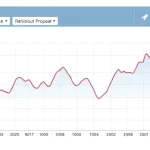Is there such thing as “Time series forecasting”? I personally don’t like this term and think that we should use a different one. Which one? Come with me in this post to find out. I understand why people use the term “Time series forecasting” – they want to show the type of data they work […]
Is there such thing as “Time series forecasting”?










